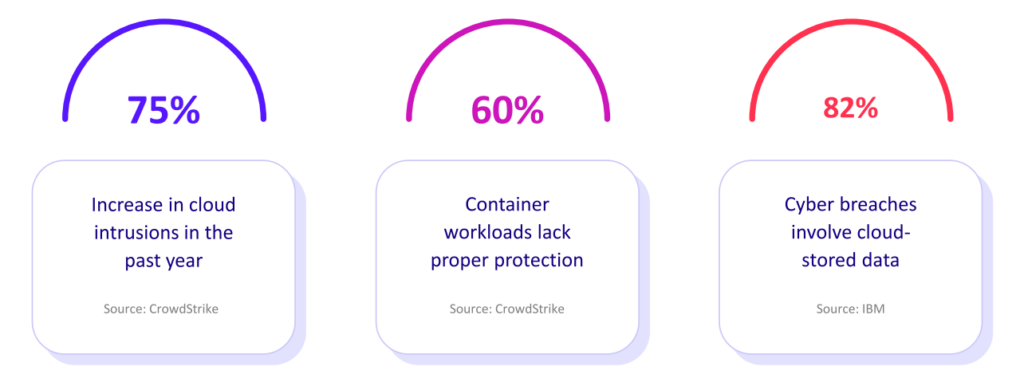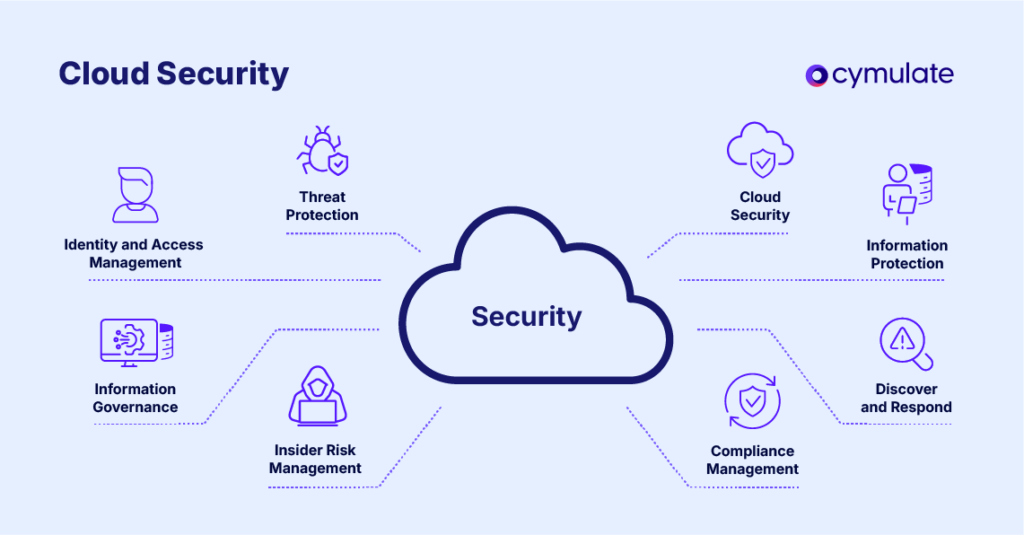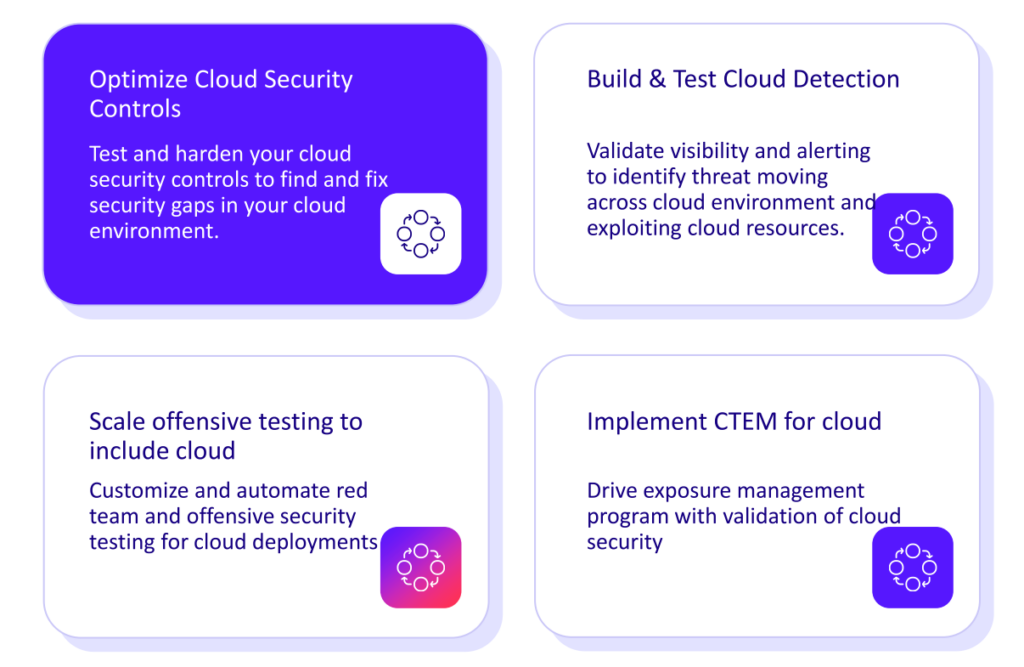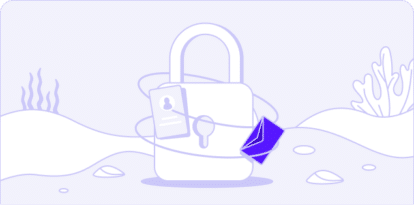Cloud Security Management

Cloud Security Management 101: Key Threats & Best Mitigation Practices
By the end of 2025, over 80% of organizations will adopt a cloud-first strategy, highlighting the growing importance of strong cloud security management.
Cloud security is a cybersecurity discipline focused on the unique challenges presented by the cloud's dynamic and distributed nature. It goes beyond perimeter security, focusing on securing workloads, data, and access within the cloud itself.
Its fundamental role is to ensure the confidentiality, integrity, and availability of cloud-based assets across diverse platforms such as Amazon Web Services (AWS), Microsoft Azure, and Google Cloud Platform (GCP).
Cloud security management includes the strategies, policies, procedures, and technologies necessary to protect data, applications, and infrastructure operating in cloud computing environments.
The High Stakes of Cloud Security Management
A data breach in the cloud can have devastating consequences, including financial losses, reputational damage, legal liabilities, and operational disruptions. Cloud security remains a top concern for 83% of organizations, highlighting complex vulnerabilities and emerging risks. In 2023, 82% of breaches involved data stored in the cloud, showcasing the heightened risk associated with cloud storage. The average cost of a cloud-related data breach reached $4.88 million in 2024, marking a significant financial impact on organizations.

With the growing amount of cloud threats and rising breach costs, organizations that take cloud security seriously gain a critical advantage. A well-structured cloud security program allows you to:
- Protect sensitive data: Cloud security helps ensure unauthorized access is prevented and theft of company and customer information is deterred. Strong encryption, access controls, and regular data backups are essential components for this defense.
- Prevent disruptions to critical business operations: Robust cloud security ensures that essential business applications and services remain consistently available. Minimizing downtime through proactive monitoring, redundancy measures, and a resilient architecture ensures business continuity during potential disruptions.
- Ensuring compliance: In the complex regulatory landscape, staying in compliance with data privacy laws and relevant industry regulations is paramount. Effective cloud security frameworks and controls are vital for adhering to General Data Protection Regulation (GDPR), Health Insurance Portability and Accountability Act (HIPAA), Payment Card Industry Data Security Standard (PCI DSS), and other compliance standards.
- Maintain customer trust and confidence: Demonstrating a steadfast commitment to robust data protection is vital for sustaining customer loyalty.
Clearly articulating and demonstrating stringent security measures, including transparency regarding data handling practices and robust protection against breaches, establishes a reliable and dependable cloud environment, instilling confidence in customers and solidifying trust in the services provided.
Challenges in Securing AWS, Azure, and GCP Environments
Securing cloud environments is a complex undertaking, particularly due to the unique characteristics of each cloud provider (AWS, Azure, and GCP).

Each platform offers its own set of security services, configuration settings, and operational models, requiring organizations to have specialized expertise in each environment.
Core Security Objectives in Cloud Environments
The core objectives of cloud security management are interconnected and crucial for establishing a fortified security posture:
- Threat Prevention: Establishing a robust defense mechanism involves proactively securing cloud workloads like virtual machines, conhttps://cymulate.com/cybersecurity-glossary/vulnerability-scanning/tainers, and serverless functions against diverse cyber threats. This entails implementing intrusion detection systems (IDS/IPS), conducting regular vulnerability scanning, and reinforcing security hardening measures to effectively counter potential intrusions.
- Detection and Response: Continuously monitoring cloud activities for anomalies or indicators of malicious behavior in real-time ensures prompt detection and efficient incident response. This entails utilizing Security Information and Event Management (SIEM) systems and well-defined incident response plans to mitigate incidents swiftly.
- Compliance: Ensuring adherence to relevant industry regulations and established security frameworks like the NIST Cybersecurity Framework (CSF) and ISO 27001 is critical. Compliance frameworks provide structured guidance for safeguarding data and maintaining a robust cloud security posture.
These objectives are interconnected and should not be treated as isolated elements. A comprehensive cloud security strategy integrates these objectives to create a robust and resilient security posture.
Cloud Security vs. Traditional IT Security
Cloud security differs significantly from traditional IT security, which historically focused on protecting physical assets within a defined network perimeter.
Perimeter-based vs. Identity-centric
Traditional security relies heavily on perimeter-based defenses, such as firewalls, to protect the internal network. Cloud security emphasizes verifying user and device identities and protecting data itself, regardless of its physical location.
Static vs. Dynamic
Traditional IT environments are relatively static, with fewer changes and updates. Cloud environments are highly dynamic, with frequent updates, new deployments, and configuration changes.
Physical vs. Virtual
Traditional security focuses on protecting physical servers and network devices. Cloud security deals with virtualized resources, such as virtual machines, containers, and serverless functions.
The Shared Responsibility Model
A fundamental concept in cloud security is the shared responsibility model. This model defines the security responsibilities of the cloud service provider and the customer. The cloud provider is responsible for the security of the cloud itself, which includes the physical infrastructure, the underlying network, and the physical security of their data centers.

The customer is responsible for the security in the cloud, which includes their data, applications, configurations, and the management of access to their cloud resources. The specific division of responsibilities varies depending on the cloud service model:
- Infrastructure as a Service (IaaS): The customer has the most responsibility, managing the operating system, applications, data, access management, and configurations.
- Platform as a Service (PaaS): The customer manages the applications, data, access management, and configurations. The cloud provider manages the infrastructure, operating systems, and platform services.
- Software as a Service (SaaS): The customer has the least responsibility, managing only the data, user access policies, and configurations. The cloud provider manages the infrastructure, operating systems, platform services, and applications.
A misunderstanding of the shared responsibility model is a common cause of security gaps in cloud deployments.
3 Key Threats to Cloud Security
Cloud security requires an understanding of the specific threats that target cloud environments. This section outlines the most prevalent risks organizations face in securing their cloud-based assets.
1. Misconfigurations and Poor Access Control
Misconfigurations in cloud resources are a leading cause of data breaches in cloud environments. Common misconfigurations include publicly accessible storage buckets, improperly configured security groups, and overly permissive Identity and Access Management (IAM) policies.
2. Insider Threats and Unauthorized Access
Insider threats, whether intentional or unintentional, pose a significant risk to cloud security. The broad access to sensitive data and the inherent remote accessibility of cloud environments can amplify the potential impact of insider actions.
Even compromised insider accounts, where external attackers gain control of legitimate user credentials, can be leveraged for malicious activities. Robust monitoring and rigorous access controls are essential for mitigating these threats.
3. API-Based Attacks, Ransomware, and Lateral Movement
APIs are essential for the integration and functionality of cloud services, but they also create a significant attack vector. Insecurely implemented APIs can provide attackers with entry points to gain unauthorized access to cloud services and the valuable data they contain.
Compliance and Framework Alignment
A good cloud security structure requires adherence to industry-recognized frameworks and relevant compliance regulations. These standards provide a structured approach to managing risks and ensuring data protection. This section details some key frameworks and compliance regulations used to maximize cloud security.
NIST cybersecurity framework (CSF)
The NIST Cybersecurity Framework (CSF) offers a flexible, risk-based approach to managing cybersecurity risks. Organized around five core functions – Identify, Protect, Detect, Respond, and Recover – the CSF provides a structured methodology for organizations to:
- Identify their critical assets and the cybersecurity risks they face.
- Implement appropriate security controls to protect those assets.
- Detect security incidents in a timely manner.
- Respond effectively to mitigate the impact of incidents.
- Recover quickly to restore normal operations.
ISO 27001/27017
ISO 27001 is a globally recognized standard for Information Security Management Systems (ISMS). Achieving ISO 27001 certification demonstrates a strong commitment to data security and provides a framework for establishing, implementing, maintaining, and continuously improving an ISMS.
CIS controls for cloud security
The CIS Controls for Cloud Security offer a set of prescriptive, prioritized, and simplified best practices designed to strengthen an organization's cybersecurity posture across all environments, including the cloud.
GDPR, HIPAA, and PCI DSS for cloud compliance
Organizations must also comply with various regulations depending on their industry and the types of data they handle in the cloud:
- GDPR (General Data Protection Regulation): Safeguards the personal data and privacy of individuals within the European Union, necessitating specific technical and organizational measures for data protection and accountability.
- HIPAA (Health Insurance Portability and Accountability Act): Mandates the safeguarding of Protected Health Information (PHI) for healthcare organizations, necessitating Business Associate Agreements (BAAs) with cloud providers and specific security controls.
- PCI DSS (Payment Card Industry Data Security Standard): Outlines security standards for organizations handling credit card data, mandating the implementation of technical and procedural controls for protecting cardholder data.
Validating security controls beyond compliance checklists
Adhering to security frameworks and compliance regulations is essential, but it's not sufficient to guarantee robust security. It's crucial to validate the effectiveness of implemented security controls through rigorous testing and simulation to ensure they can prevent and detect real-world attacks. Relying solely on compliance checklists can create a false sense of security. Beyond frameworks and compliance standards, specific steps must be taken for cloud security.
Cloud Security Best Practices
Mitigating risks and strengthening defenses require implementing a comprehensive set of cloud security best practices. This section outlines key strategies for identity management, data protection, and network security in the cloud.
Identity & Access Management (IAM)
Effective IAM is fundamental to cloud security. Robust controls around identity and access prevent unauthorized users from accessing cloud resources and performing malicious activities. Below are some key best practices to consider for this important aspect of cloud security.
- Zero Trust: Implementing the principle of "never trust, always verify" is a hallmark of Zero Trust. In contrast to conventional perimeter security frameworks that presuppose trustworthiness inside the network, Zero Trust employs ongoing authentication and authorization for every user and device attempting to access cloud resources.
- Least Privilege Access: Granting only the essential minimum permissions needed for users and systems to do their jobs helps prevent damage or breaches and falls within the principle of least privilege access.
Data Protection
A strategy that incorporates policies and technologies designed to safeguard sensitive information both in transit and when stored in the cloud are at the heart of Data Protection. A solid Data Protection strategy should include.
- Encryption: Encryption ensures data stays confidential, and should unauthorized individuals intercept data, the data would appear unreadable. Encryption should be performed when the data is at rest and also in transit.
- Tokenization: Another process that offers some protection for private data involves exchanging sensitive data for non-sensitive surrogates also called tokens. This enables better privacy protection during storage or while conducting processing in less secure settings.
- Data Loss Prevention (DLP): Using DLP helps organizations secure private data by flagging and managing it as well as minimizing leakage, regardless if the leaks came from incidents or intentional disclosures from inside their cloud networks.
Network & Application Security
Robust measures that shield the network and applications form an impregnable barrier to potential breaches and unauthorized activity fall within Network & Application Security. This strategy should entail:
- Web Application Firewalls (WAFs): Web applications are safeguarded using Web Application Firewalls that sift through all potentially malicious activity, therefore mitigating attacks that take advantage of SQL code injections or cross-site coding.
- Container Security: It is imperative to protect containerized platforms starting with image design and finishing off by runtime; considering the ubiquity and utilization of these containers within the clouds, their protective measures must be sufficient at each point during their respective life cycles.
Threat Detection & Response
Quickly identifying and addressing security threats is vital to reducing harm and limiting damage to infrastructure, operations, and data. Using processes that actively find threats in clouds allows security experts or those managing the operations to respond as efficiently as possible when reacting to real and looming breaches
- Breach and Attack Simulation (BAS): Regular simulations of possible real-life scenarios performed by companies aid security staff to improve how clouds get secured while proactively finding shortcomings across protective technologies before getting exposed by malicious actors.
- Cloud Security Posture Management (CSPM): Cloud Security Posture Management (CSPM) is a proactive and continuous process that automates the detection of misconfigurations, identifies security gaps, and ensures compliance with industry standards and best practices within cloud environments.
By adopting effective cloud security best practices, organizations can improve their security posture, reduce the risk of data breaches, and maintain customer trust.
Cloud Security Strategy Implementation
Effectively protecting and defending cloud assets requires a well-defined and diligently implemented cloud security strategy. This section outlines the key steps for developing such a strategy, from conducting risk assessments to integrating automation and continuous validation.
1. Conducting a risk assessment for cloud environments
The first step in implementing a cloud security strategy is to conduct a thorough risk assessment specifically tailored to the cloud environment. This assessment should identify potential threats and vulnerabilities, assess the likelihood and impact of each risk, and prioritize risks based on their severity and potential business impact.
2. Aligning security measures with business and compliance needs
Security measures should be aligned with both business objectives and compliance requirements. Ensure that security controls not only meet regulatory mandates but also support the organization's overarching business goals, known as This requires a careful balancing act to maintain robust security without hindering operational efficiency or usability.
3. Integrating security automation and continuous validation
Automating routine security tasks, such as vulnerability scanning, patching, and configuration management, reduces manual effort and the potential for human error. Implementing continuous security validation ensures that security controls are functioning as intended and can effectively defend against current and emerging threats.
4. Ongoing threat monitoring, attack simulation, and remediation
An effective cloud security strategy requires ongoing threat monitoring to detect suspicious activities and emerging threats. Regular attack simulations, using tools like Breach and Attack Simulation, validate the effectiveness of defenses against the latest threats and identify areas for improvement. A well-defined incident response plan is essential for quickly and effectively remediating any security incidents that may occur.
How Cymulate Enhances Cloud Security Through Validation

Cymulate offers a robust and comprehensive platform that significantly enhances cloud security through its validation capabilities. Cloud security validation enables
you to optimize your cloud security controls and better protect the systems and data hosted in your cloud platforms.
The platform offers nearly 8,000 cloud attack scenarios to simulate high-privilege actions with an “assume breach” mindset, identifying exploitable vulnerabilities across AWS, Azure, and GCP. These scenarios simulate real-world attacks, such as identity-based attacks, API vulnerabilities, and lateral movement attempts, allowing organizations to validate the effectiveness of their security controls. The full suite of test cases is completely production-safe and will not harm your cloud environment.


